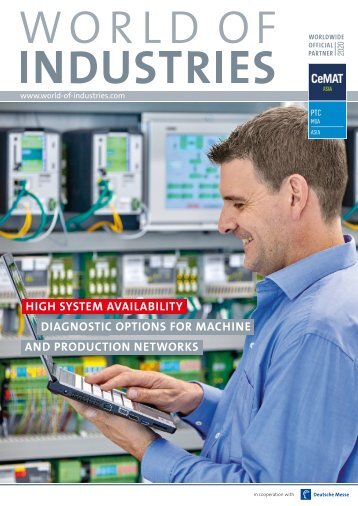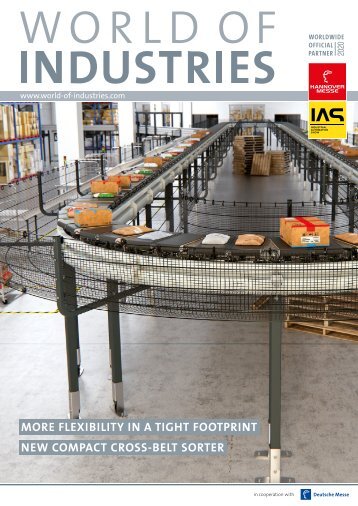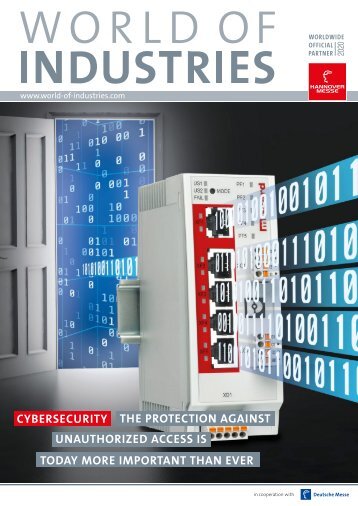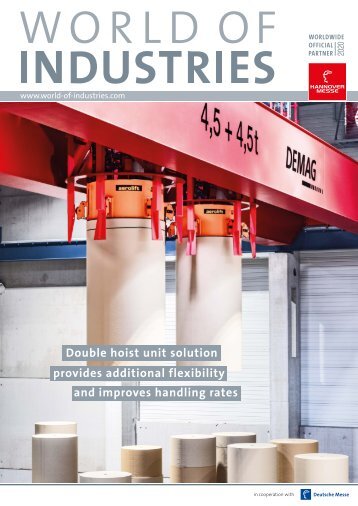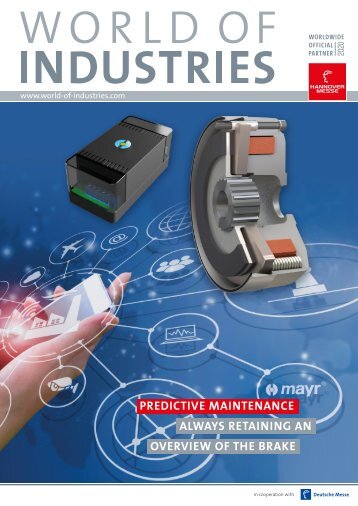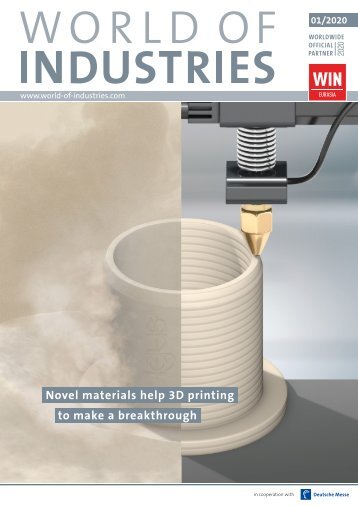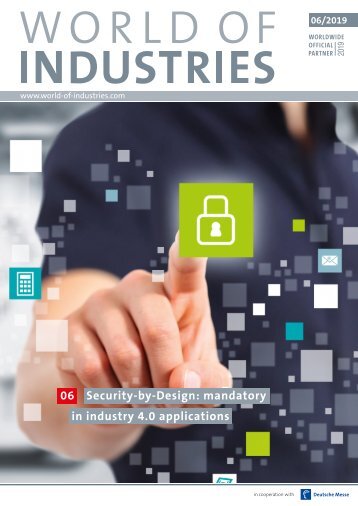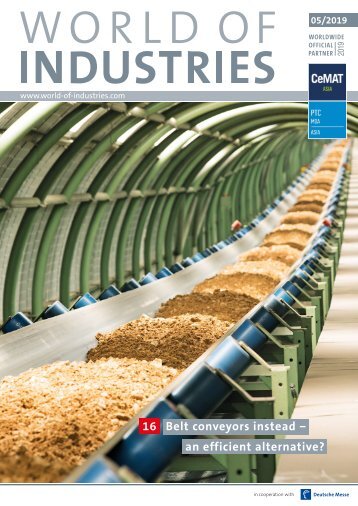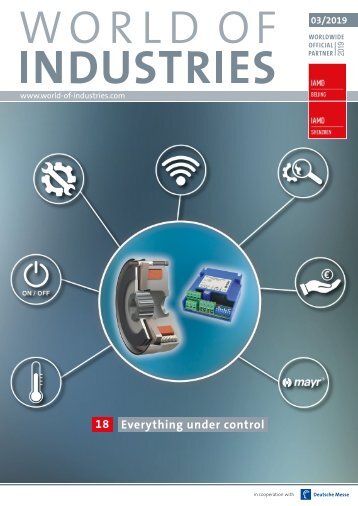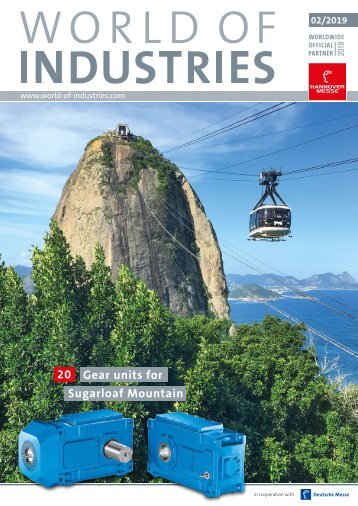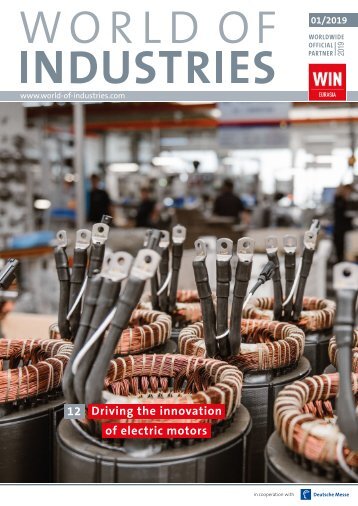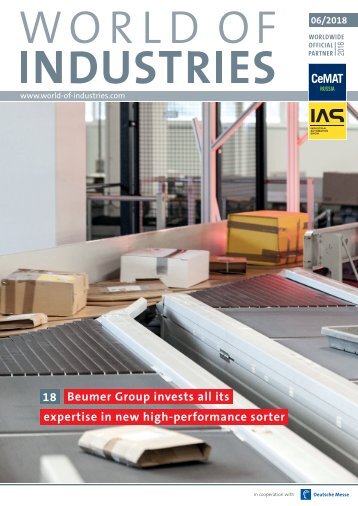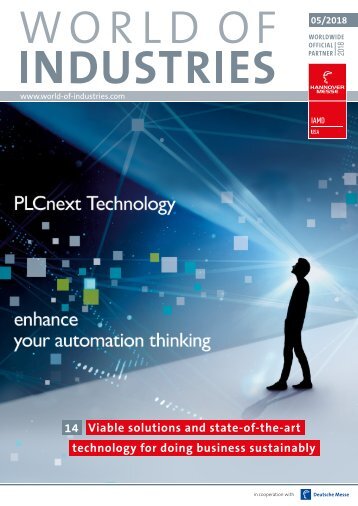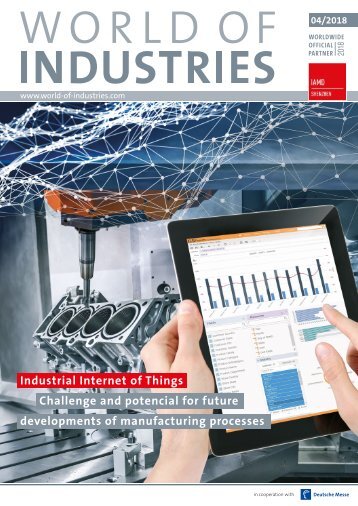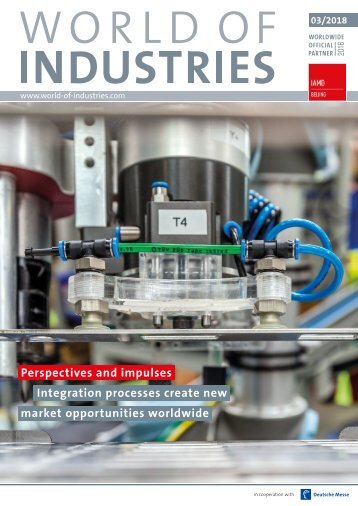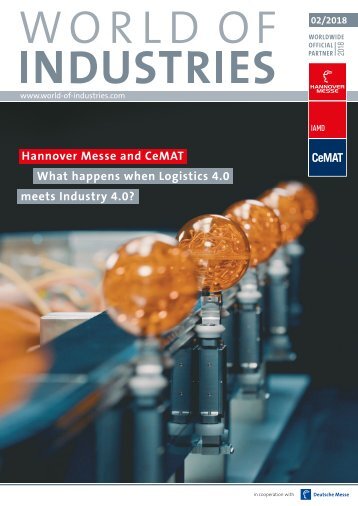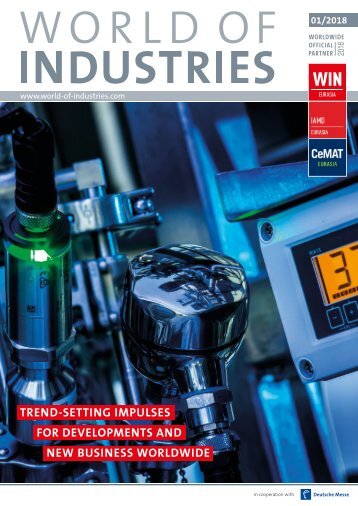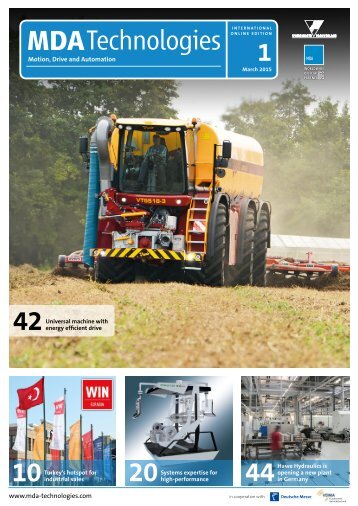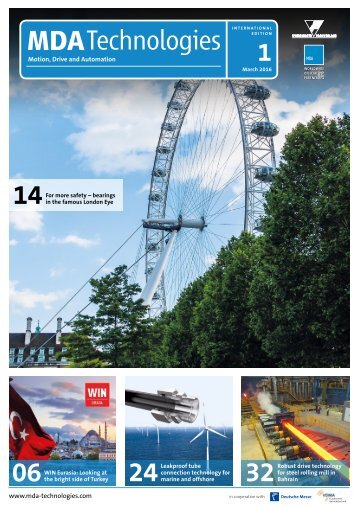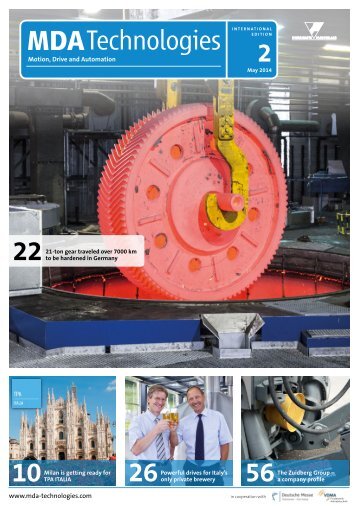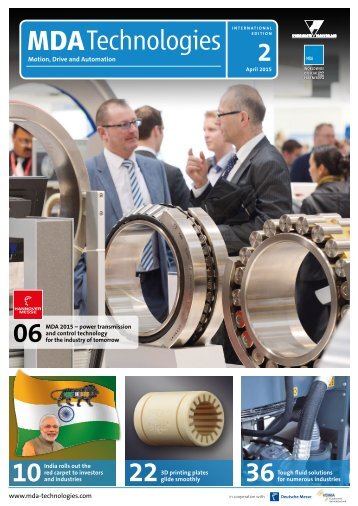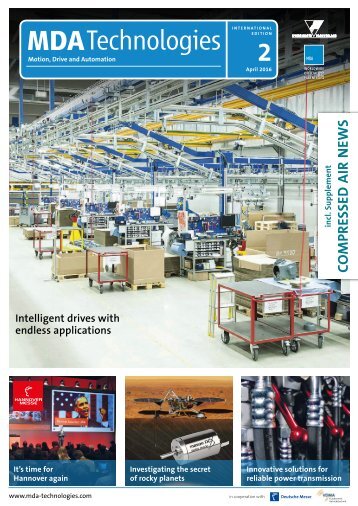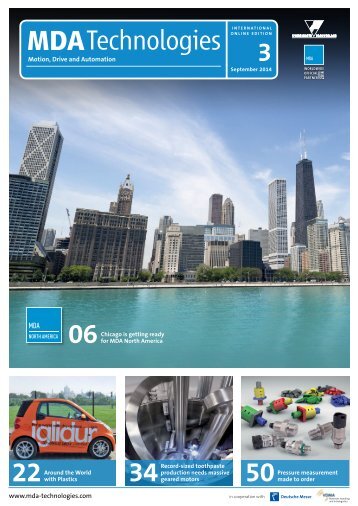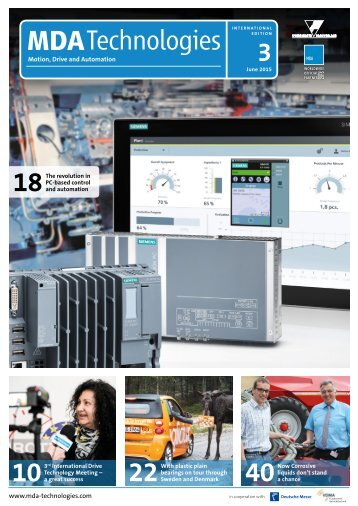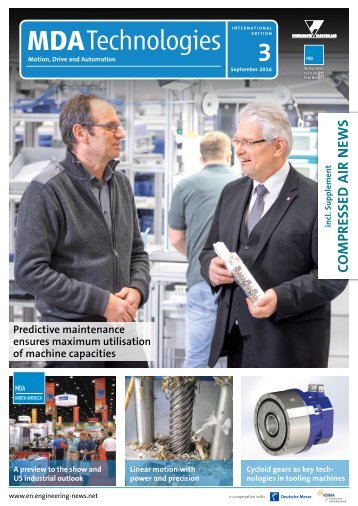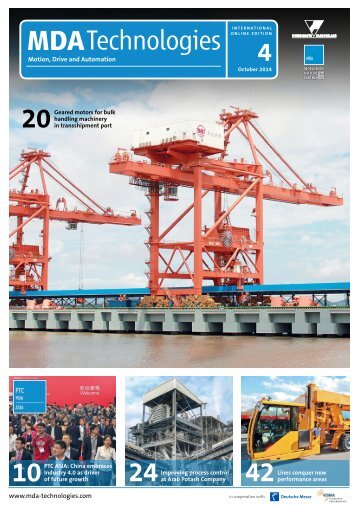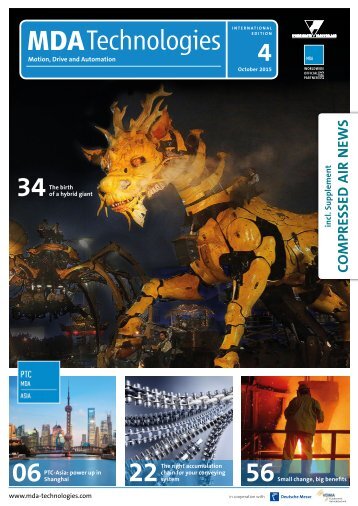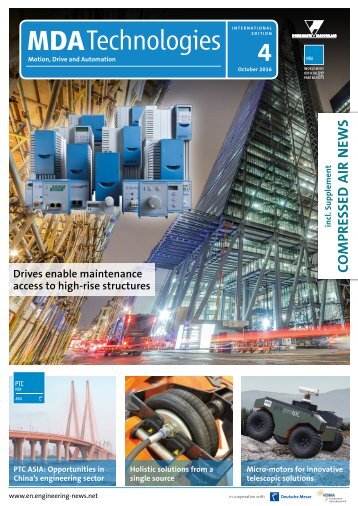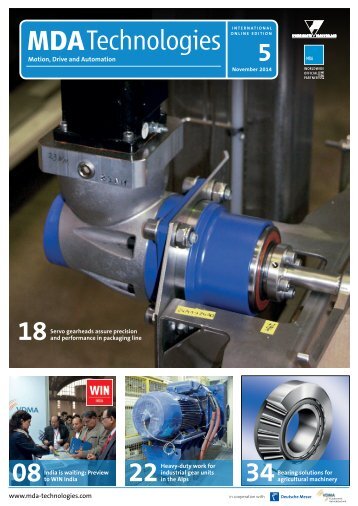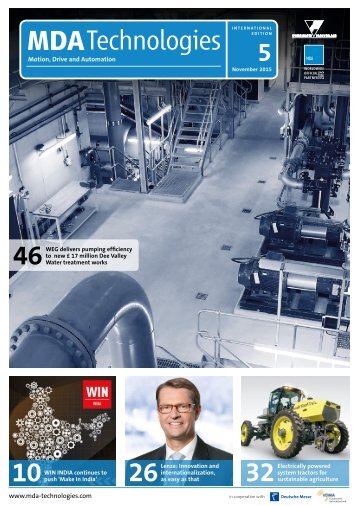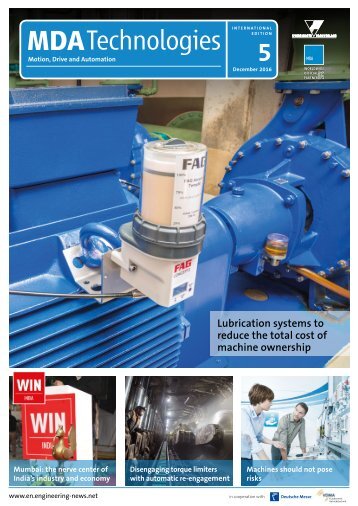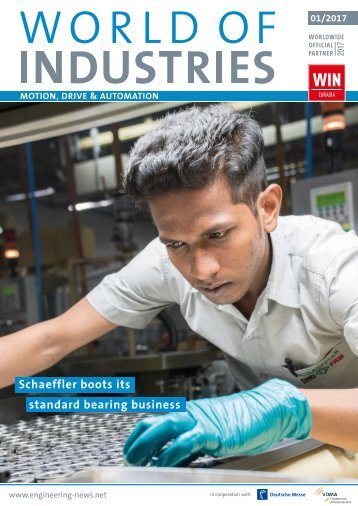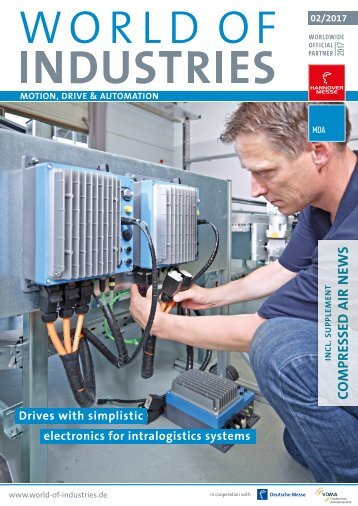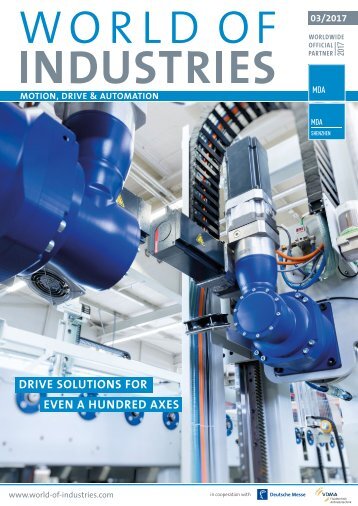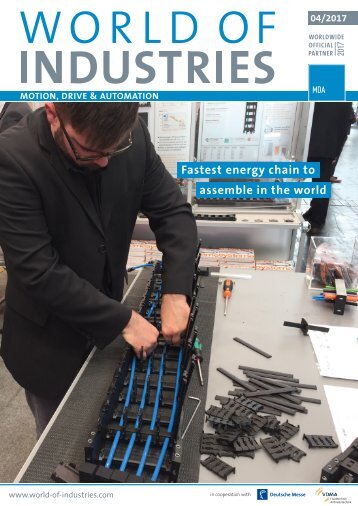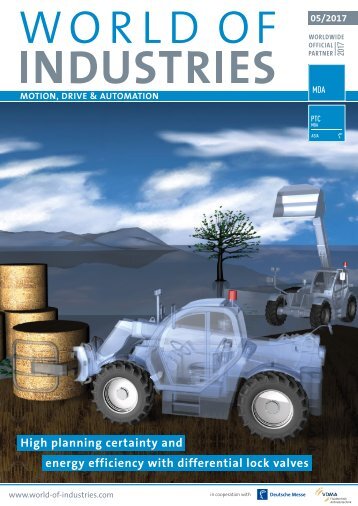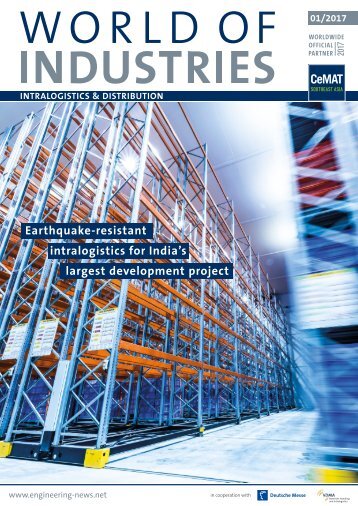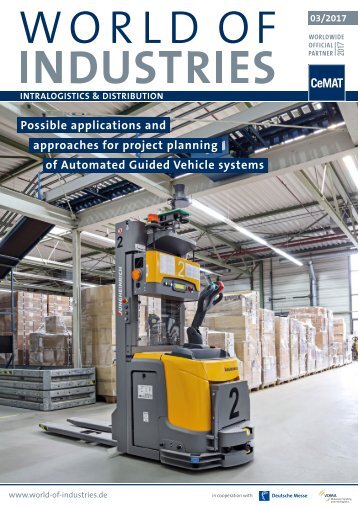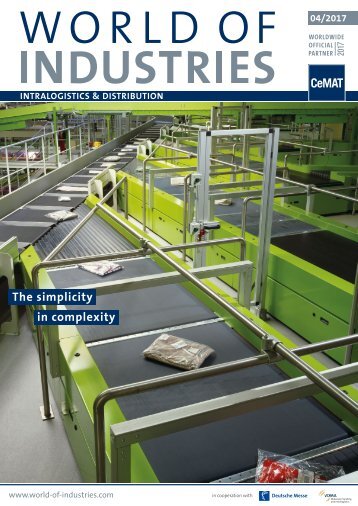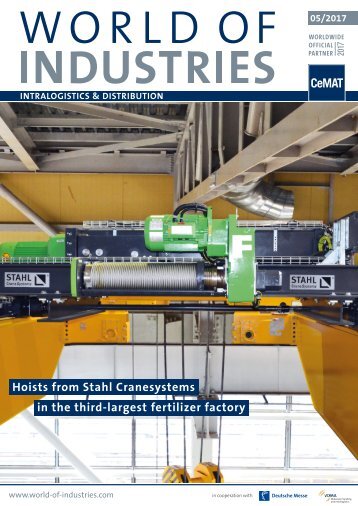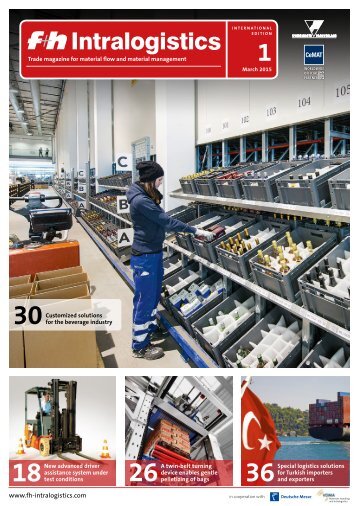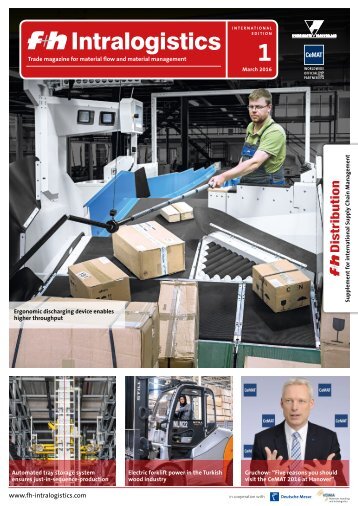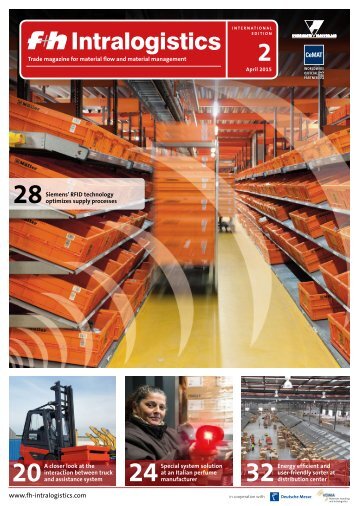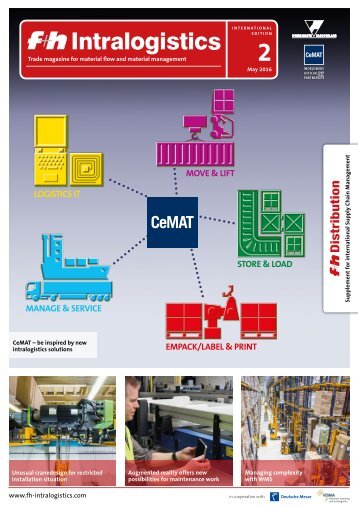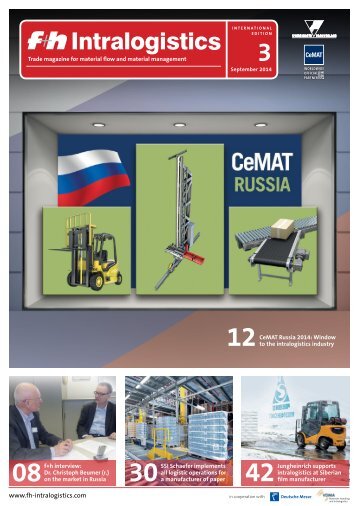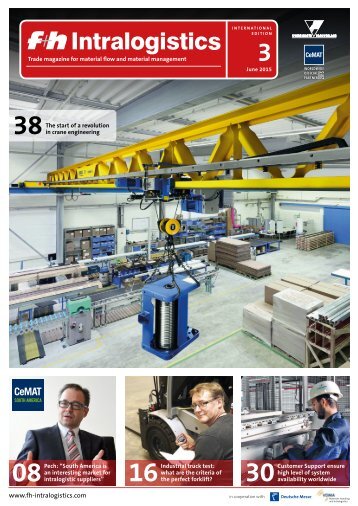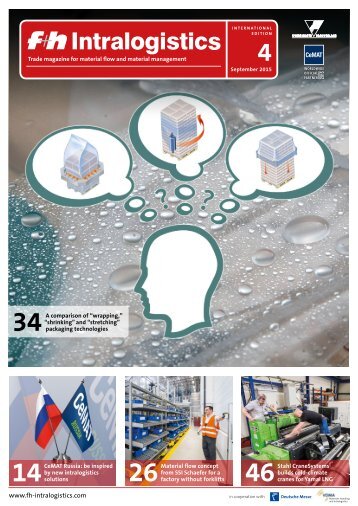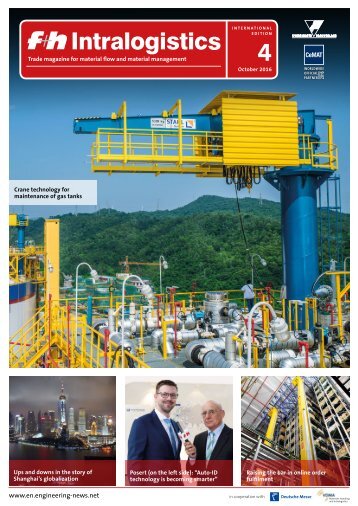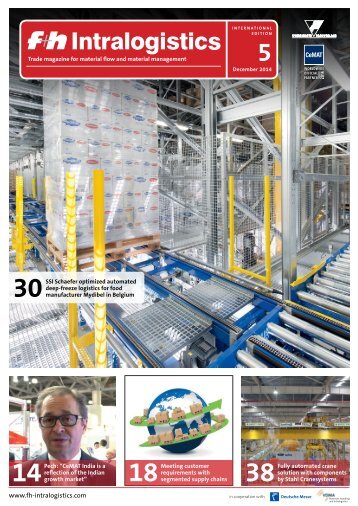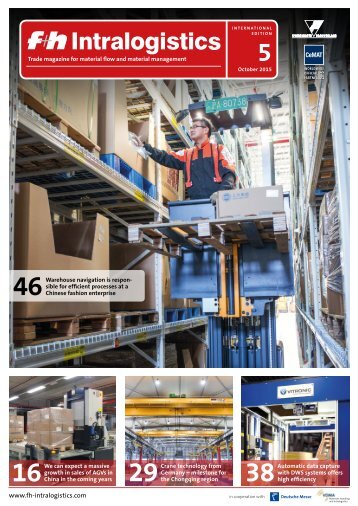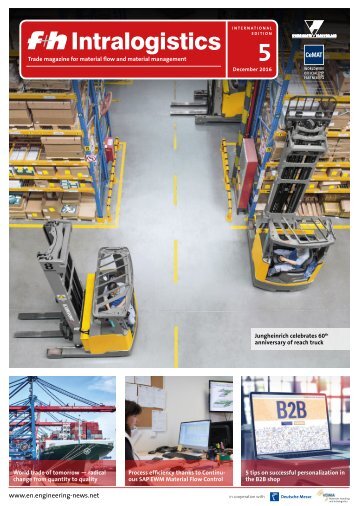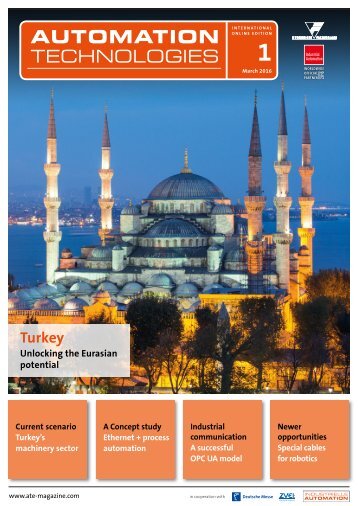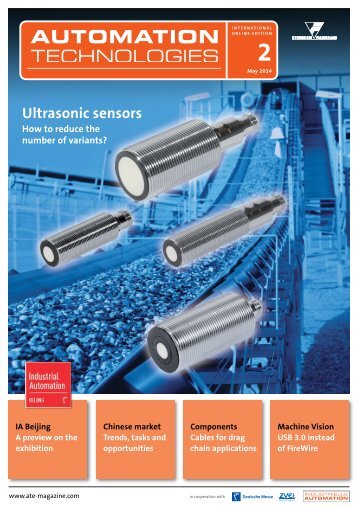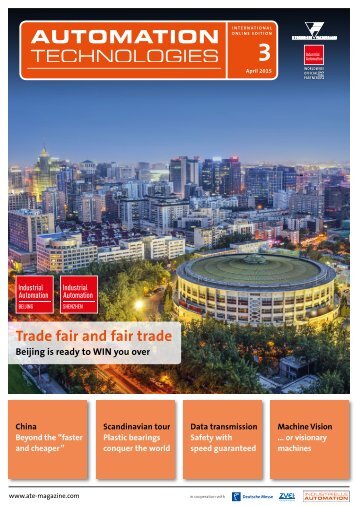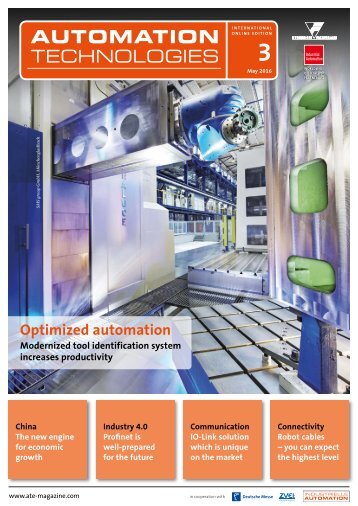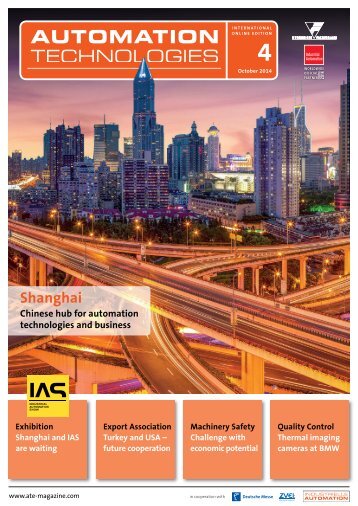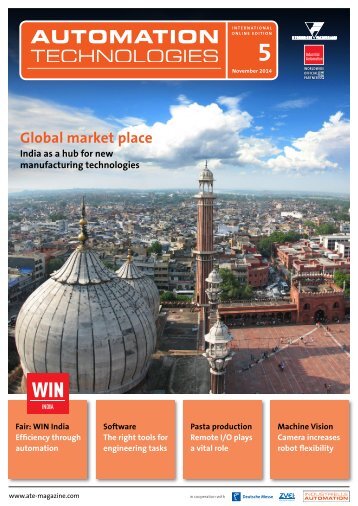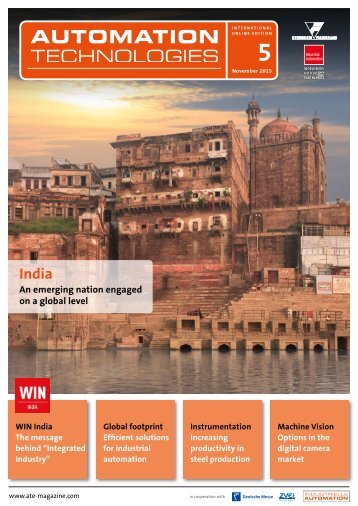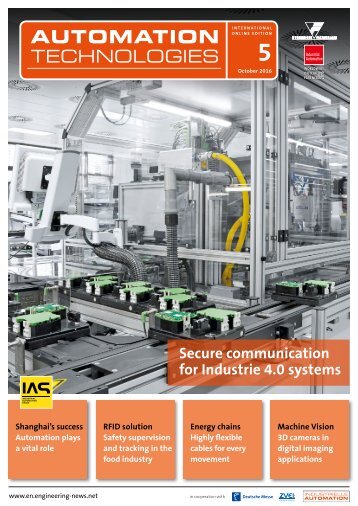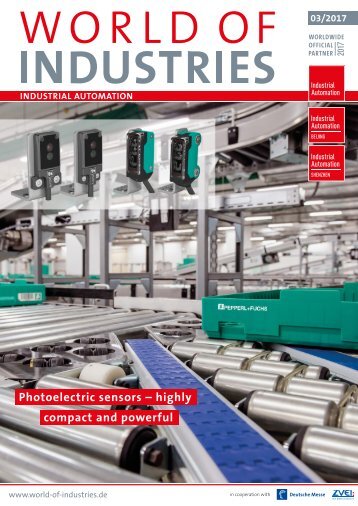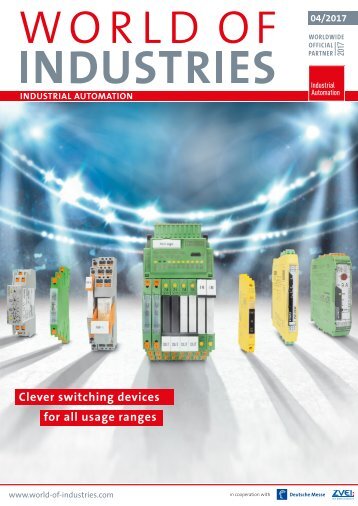f+h Intralogistics 5/2014
- Text
- Fuh
- Intralogistics
Logistics management I
Logistics management I Interview f+h Intralogistics in conversation with the Vanderlande management The strategic objectives of companies are influenced by many factors. Naturally, the orientation towards customer demands is one of the most important factors. f+h Intralogistics editors spoke to Jan Hulsmann (left; Managing Director Warehouse Automation, Parcel & Postal, Vanderlande, the Netherlands) and Matthias Kramm, (middle; Managing Director at Vanderlande Mönchengladbach) at the company headquarters in Veghel, the Netherlands, about Vanderlande‘s reaction to such framework conditions with regard to different user sectors, an international appearance, and innovation, as well as product policies. Vanderlande is an international company which operates in a total of 17 countries. Which countries or regions would you like to add to this list? Hulsmann: We are most definitely aiming to expand to the US. We may already have local subsidiaries, but the country still holds a vast potential with regard to intralogistics and thus also for us. We have also invested and established offices throughout Latin America, for instance in Argentina, Brazil, Chile, and Columbia. In the short and medium term, we forecast a considerable potential for intralogistics and the airport segment in said countries. Countries in the growing Asian region also offer great potential for strategic market developments, most of all China. But also Korea and Indonesia have become aware of the potentials that lie in intralogistics. The same applies to Australia and, last but not least, we consider the growing markets in Eastern Europe a part of our operating range. However, the recent crisis in Ukraine has currently made it harder to operate in some countries. Obviously, we are very active in markets and have great plans. How significant is the European and specifically the German market in Vanderlande‘s global, corporate strategy? Hulsmann: On the basis of the high degree of automation, Germany and other important European industrial countries most definitely play a significant role in our corporate strategy. What‘s more, Germany as the largest user market for high-tech automation in intralogistics has a certain signal function for other user markets. Kramm: On the other hand, the German user market does not offer unrestricted capacities for highly automated intralogistics. With regard to our corporate strategy, this means that we can still enhance our market share in Germany to a certain The interview with Jan Hulsmann and Matthias Kramm was conducted by Reiner Wesselowski, editor in chief at f+h Intralogistics (from left to right) 20 f+h Intralogistics 5/2014
Interview I Logistics management extent before we need to securely maintain it at this high level, and this is our objective. As a rule, Europe represents an important user market for highly automated intralogistics and for this reason, it is an important pillar of our corporate strategy. It goes without saying that developments in individual sectors, such as e-commerce, also play a vital role in this strategy. Does the booming online trade and also e-commerce influence technical development projects within your company? Kramm: You are hinting at projects we implemented for well-known, large online retailers. We are already working on or planning additional projects. We can also record a continuously high activity with regards to requests from the e-commerce sector. In these areas, the intralogistics must of course match the corresponding companies‘ processes and procedures. To this end, we not only boast comprehensive expertise in the sector, we also offer a vast product portfolio – ranging from different sorting technologies, shuttle and warehousing systems to the core aspect of online retail, picking technology. Consequently, we offer anything an e-commerce company needs. As a result, we are mainly focusing on applying the matching technology from our portfolio to the tasks and merge the two to integrate them into our customers‘ organizational procedures. It “We aim to increase our customers competitiveness” Matthias Kramm goes without saying that we are able to adapt products and systems to any special requirements. In any case, there is no direct influence on our development work. Demographic changes are also a challenge intralogistics must face. How do you structure intralogistics and intralogistics workstations in particular to the needs of an aging workforce to enable employees to also deliver outstanding results despite their advanced age? Hulsmann: Indeed, demographic changes are an issue our society and its companies must face. Particularly the intralogistics industry is faced with great challenges that demand solutions. Relieving an aging workforce of intensive physical, but also monotonous tasks must certainly be at the core of what we do, as these are aspects that apply to warehousing and picking all too frequently. We identified the issues brought about by demographic changes at a relatively early stage and already developed an ergonomic workstation in 2007. Nowadays, we provide workstations that are geared towards the demands of an aging workforce with an ergonomic design for Jan Hulsmann order picking as well as repackaging stations in goods receipt and shipping departments. In this context, we closely collaborate with a leading European institute for ergonomics and develop as well as test workstations designed for an aging workforce at our innovation center in Veghel, the Netherlands. “We are an internationally oriented company with clear, strategic objectives” As you just mentioned, you develop and test intralogistics solutions geared towards customers‘ demands at your innovation center in Veghel. What role does this center play in your corporate philosophy? Hulsmann: We would like to support our customers in continuously improving their competitive edge by providing automated material handling system solutions. This is an aspect that lies at the core of our corporate philosophy and in this context, our innovation center in Veghel forms a vital part. At the facility we comprehensively test the performance of our products and verify whether our components and sub-systems are suitable for use in a master system. Kramm: Additionally, the innovation center offers a good, if not the best, opportunity to give customers a practical impression of our activities and efforts to create the best solution for any task. In your opinion, where do you envisage the greatest challenges for the future of intralogistics? Hulsmann: That is hard to say. However, I think the future of intralogistics will be most of all driven by the fast-paced changes in the B to B as well as the B to C sectors. But I am also of the opinion that the previously mentioned demographic changes will be something to intensively attend to in the coming years. Kramm: This is paired up with the rapid developments in IT and the increasing demand for corresponding intralogistics solutions. Apart from this we, and this includes the entire intralogistics industry, will be dealing with technical aspects, such as consolidating and continuously improving current technologies in the coming years. But sometimes unforeseen things happen. Thank you for talking to us! Photos: Reiner Wesselowski/Vanderlande www.vanderlande.com About Vanderlande Vanderlande, based in Veghel in the Netherlands, plans, installs and services material flow systems of any size for sectors including the online retail sector, food industry, parcel service providers, or airports to enable efficient processing and distribution of a host of different products. The company manages subsidiaries in the Netherlands, Belgium, Germany, France, the UK, Spain, Canada, PR China, India, South Africa, and the US. In the 2013/2014 financial year, Vanderlande generated a net revenue in excess of €790 million and employed a workforce of more than 3,000 employees. No less than 500 of these employees work at one of the company‘s three German sites. f+h Intralogistics 5/2014 21
- Page 1 and 2: Intralogistics Trade magazine for m
- Page 3 and 4: table of content Intralogistics Tra
- Page 5 and 6: EDITORIAL Intralogistics Trade maga
- Page 7 and 8: ‘Best in Class Winner’ Junghein
- Page 9 and 10: SOME THINK DELIVERY ERRORS ARE INEV
- Page 11 and 12: Indian Market blocks recently scrap
- Page 13 and 14: Interview I indian market areas of
- Page 15 and 16: CEMAT INDIA latest news of procedur
- Page 17 and 18: Hercules Hoists Ltd ... ... is a on
- Page 19: Logistics management Segment-specif
- Page 23 and 24: material flow Crisplant is known fo
- Page 25 and 26: Material flow About CTI Systems CTI
- Page 27 and 28: Warehousing tious targets. Essentia
- Page 29 and 30: and Intralogistics warehousing tech
- Page 31 and 32: Warehousing In food-logistics, the
- Page 33 and 34: Product News Supply battery changin
- Page 35 and 36: Efficient Warehouse Systems As a fu
- Page 37 and 38: Cranes and hoists 01 The logistics
- Page 39 and 40: Cranes and hoists 01 Automatic proc
- Page 41 and 42: Vanderlande helps to boost revenue
- Page 43 and 44: Technology knowledge for engineers
Inappropriate
Loading...
Mail this publication
Loading...
Embed
Loading...

